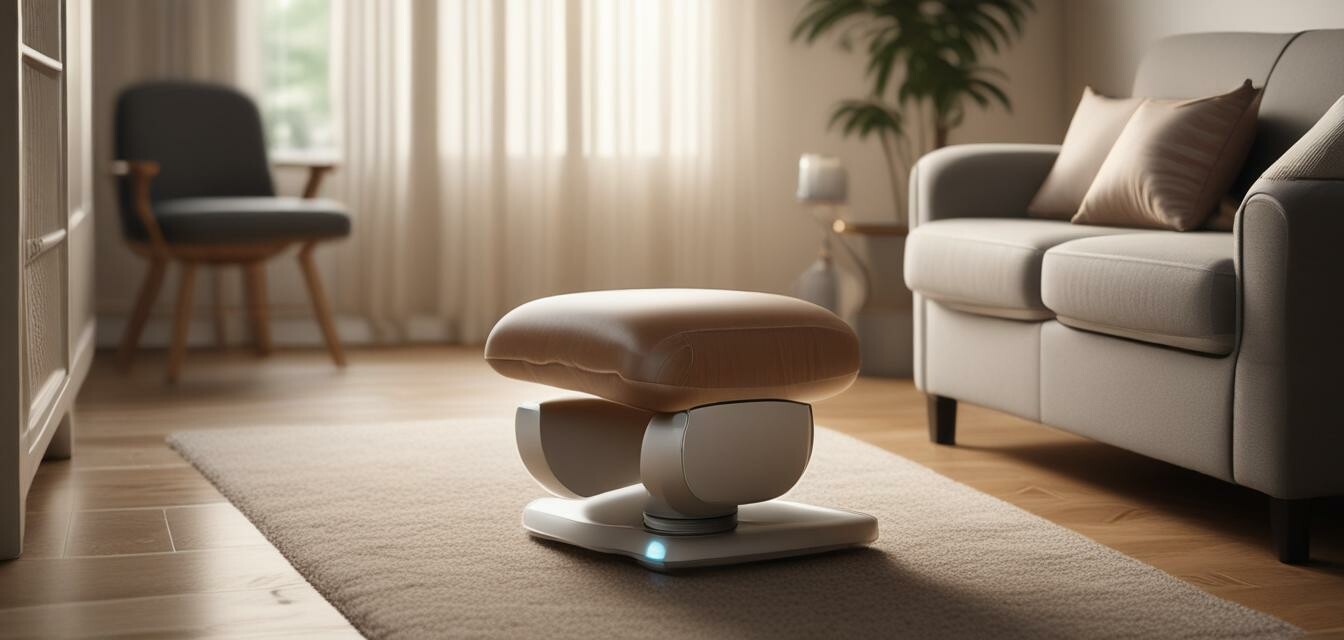
Managing arthritis pain with knee massagers
Key Takeaways
- Knee massagers can provide targeted relief for arthritis pain.
- Adjustable settings enhance the personalization of the massage experience.
- Establishing a routine can maximize the benefits of using a knee massager.
- Combining strategies may lead to better results.
- Consult with a health professional to integrate knee massagers into your pain management plan.
Knee massagers are becoming increasingly popular among those managing arthritis pain. These helpful devices offer a non-invasive way to alleviate discomfort and promote relaxation. This article delivers valuable insights on effectively using knee massagers for those dealing with arthritis, providing practical tips on settings, duration, and optimal practices.
Understanding arthritis and its impact
Arthritis is a common condition that affects millions of people, leading to pain, stiffness, and swelling in the joints. For individuals with arthritis, managing daily routines can be challenging. Here is a brief overview of arthritis types:
| Type of Arthritis | Description |
|---|---|
| Osteoarthritis | A degenerative joint disease that results from the wear and tear of cartilage. |
| Rheumatoid arthritis | An autoimmune disease that occurs when the immune system attacks the lining of the joints. |
| Psoriatic arthritis | A type of arthritis that affects some people with psoriasis, causing joint pain and stiffness. |
How knee massagers can help
Knee massagers specifically target the knee area, helping alleviate discomfort associated with arthritis through various mechanisms, including:
- Improved blood circulation
- Relaxation of the muscles surrounding the knee
- Reduced tension
- Potential enhancement of joint mobility
Choosing the right settings for optimal relief
The effectiveness of a knee massager often depends on its settings. Here are some essential factors to consider:
| Setting | Description | Usage Tips |
|---|---|---|
| Heat | Helps to ease stiffness and relax muscles. | Start with low heat and increase gradually as comfortable. |
| Intensity | Refers to the strength of the massage. | Adjust to your comfort level; increase as needed. |
| Massage Mode | Types of massage patterns (kneading, tapping, rolling). | Experiment with different modes to find what works best. |
Duration of use
The duration you use your knee massager directly affects its efficiency. Here are some recommended durations based on personal experience:
- 10-15 minutes for initial users to gauge comfort levels.
- 20-30 minutes for more experienced users seeking deeper relief.
- 1-3 sessions per day, depending on personal needs and comfort.
Establishing a routine for maximum benefits
Consistency is key to achieving the desired results with knee massagers. Below are tips to help establish a routine:
- Incorporate the massager into your daily schedule, such as during relaxation time or before bed.
- Track your usage and pain levels to identify patterns and adjust your routine accordingly.
- Combine massager use with gentle exercises to enhance mobility.
Combining techniques for effective management
For optimal pain management, consider combining knee massager use with other techniques:
- Gentle stretching exercises to maintain flexibility.
- Heat or cold therapy to complement massager effects.
- Consultation with healthcare professionals for personalized routines.
Safety precautions and recommendations
While knee massagers can be helpful, certain precautions should be taken:
- Avoid using if you have severe joint injuries without consulting a doctor.
- Listen to your body and stop if you feel discomfort.
- Keep the device clean and follow the manufacturer's guidelines for maintenance.
Conclusion
Using knee massagers can significantly enhance the management of arthritis pain. By choosing the right settings, duration, and incorporating other techniques, you can find effective methods that provide relief and improve your quality of life. You can explore more guides on our blog to find additional ways to enhance your experience with these remarkable devices.
Pros
- Targeted relief for knee pain.
- Customizable settings for personalized care.
- Convenient for at-home use.
- Can complement other pain management strategies.
Cons
- Not suitable for everyone, especially severe injuries.
- Effectiveness may vary depending on personal preferences.
- Initial costs for quality devices can be high.
Tips for beginners using knee massagers
- Start with shorter sessions and gradually increase duration as comfort allows.
- Familiarize yourself with each setting before lengthy use.
- Incorporate soft cushions for added comfort.
- Consider using the massager consistently to determine what works for you.
For further insights on pain relief strategies, check out our latest trends section for emerging solutions and other devices.

